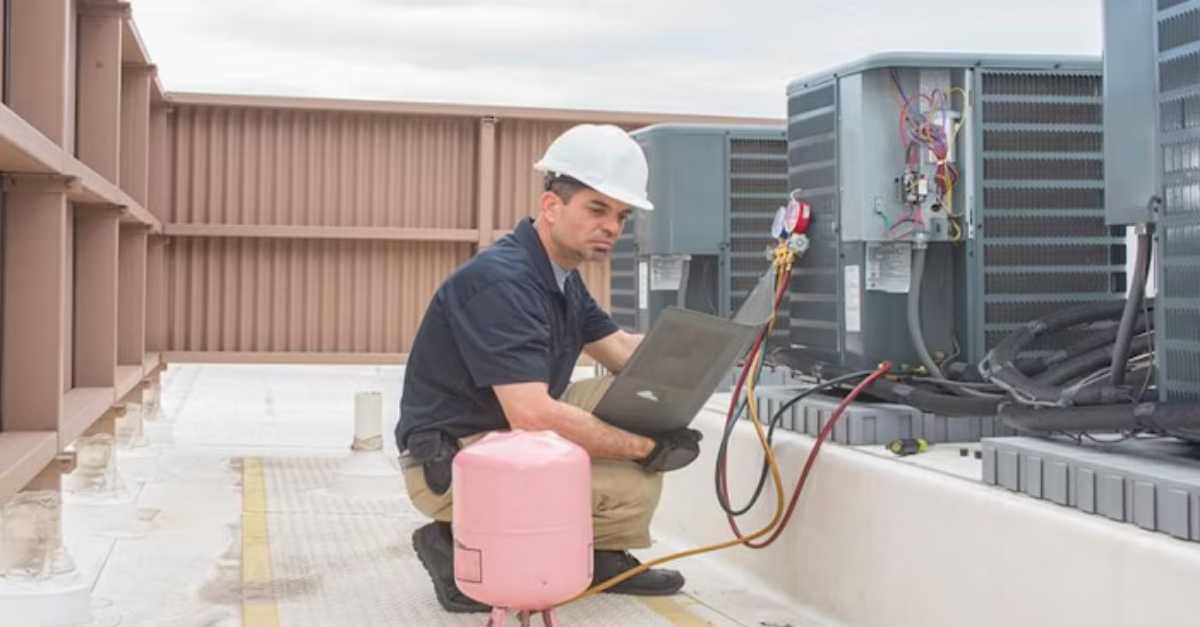
Navigating the New EPA Refrigeration Regulations: A Path to Sustainability and Compliance
Discover how the EPA's new refrigeration regulations impact businesses and how Accruent Observe simplifies compliance with asset management and ...
Solutions
Workplace Management Solutions
Real Estate Management Solutions
Maintenance Management Solutions
Energy Management Solutions
Engineering Document Management Solutions
Asset Management Solutions
Automate campus scheduling for classes, meetings, and exams with our EMS software.
Plan and manage conferences effortlessly with EMS software to impress guests and streamline operations.
Boost workplace flexibility and maximize space use with seamless desk and room booking.
Organize workplace or campus events smoothly, creating memorable experiences.
Optimize workspace, manage allocations efficiently, and reduce costs with our space management solutions.
Deliver projects on time and within budget by improving communication, collaboration, and efficiency with our software.
Streamline lease accounting for ASC 842, IFRS, and GASB compliance.
Manage leases efficiently by tracking key dates, analyzing costs, and ensuring compliance.
Centralize data and analytics for better insights, faster negotiations, and revenue growth.
Centralize facility and asset maintenance, automate work orders, and ensure compliance with our CMMS software.
Extend asset life, reduce downtime, and prevent costly repairs with data-driven monitoring.
Prevent equipment failures and extend asset life by detecting and addressing issues early.
Make sustainable, cost-efficient energy decisions by monitoring and optimizing power consumption.
Remotely monitor and control equipment with real-time data to predict issues, boost efficiency, and reduce downtime.
Easily share and collaborate on documents, creating a single source of truth for engineers and contractors.
Manage and analyze assets across their lifecycle to schedule maintenance, reduce downtime, and extend lifespan.
Improve visibility, automate work orders, and ensure compliance for efficient facility and asset management.
Resources
Browse our full library of resources all in one place, including webinars, whitepapers, podcast episodes, and more.
Support
Looking for access to technical support, best practices, helpful videos, or training tools? You’ve come to the right place.
About Accruent
Get the latest information on Accruent, our solutions, events, and the company at large.

With fines totaling upwards of $37,500 per day, it’s important to note how new regulatory changes will affect your enterprise refrigerant management compliance.
In 2016, a well-known national grocery store chain violated the Clean Air Act by failing to promptly repair leaks from their refrigeration equipment. In addition to paying a hefty $500,000 fine, this violation resulted in over $2 million of mandatory repairs and upgrades, because of faulty enterprise refrigerant management.
However, this grocery store chain case is not the largest fine the EPA levied for faulty enterprise refrigeration management. One of the largest cases settled was over $4 million in fines with millions of dollars in mandatory upgrades. Previously, the EPA 608 section standards only applied to appliances containing ozone-depleting substances.
Leak rates now must be calculated every time refrigerant is added to the appliance. As a result, if the leak rates exceed the newer lowered thresholds, that appliance must be repaired to bring the leak rate back down.
For appliances that have exceeded the leak rate, periodic leak inspections (moved link) now will be required and conducted by a certified technician.
If the appliance is continuously monitored by an automatic leak detection system, they are not required to adhere to the periodic leak inspections.
If the appliance has been inspected and needs repair, a verification test must be conducted ensuring that the repaired appliance has returned to normal operation conditions. Owner-operators have a 30-day repair period to inspect, repair and verify the appliance.
When components of a repair are not available within the 30-day repair period, a 30-day extension to repair will be available to all commercial refrigeration and comfort cooling appliances instead of just IPRs. For any appliances that need to be retired they have 18 months to retire or replace as opposed to the current standard of one year.
Some organizations are dealing with several variations of refrigerants and appliances, so the room for error and misunderstanding of standards is big, leaving them even more vulnerable to EPA fines. With refrigerant leaks as one of the highest maintenance expenses, adding on a repair and a hefty fine due to non-compliance could have a very significant impact on your organization.
Learn more about how Accruent helps identify problems, track repairs and minimize vulnerabilities in refrigeration management. Contact us today!
Discover how the EPA's new refrigeration regulations impact businesses and how Accruent Observe simplifies compliance with asset management and ...
Avoid fines from refrigeration leaks, monitor usage, and stay compliant. vx Sustain has all your refrigeration management needs covered.
To limit greenhouse gases and ensure environmental safety and compliance, understand the EPA standards for refrigerant gases.
Subscribe to stay up to date with our latest news, resources and best practices.
* To unsubscribe at any time, please use the “Unsubscribe” link included in the footer of our emails.